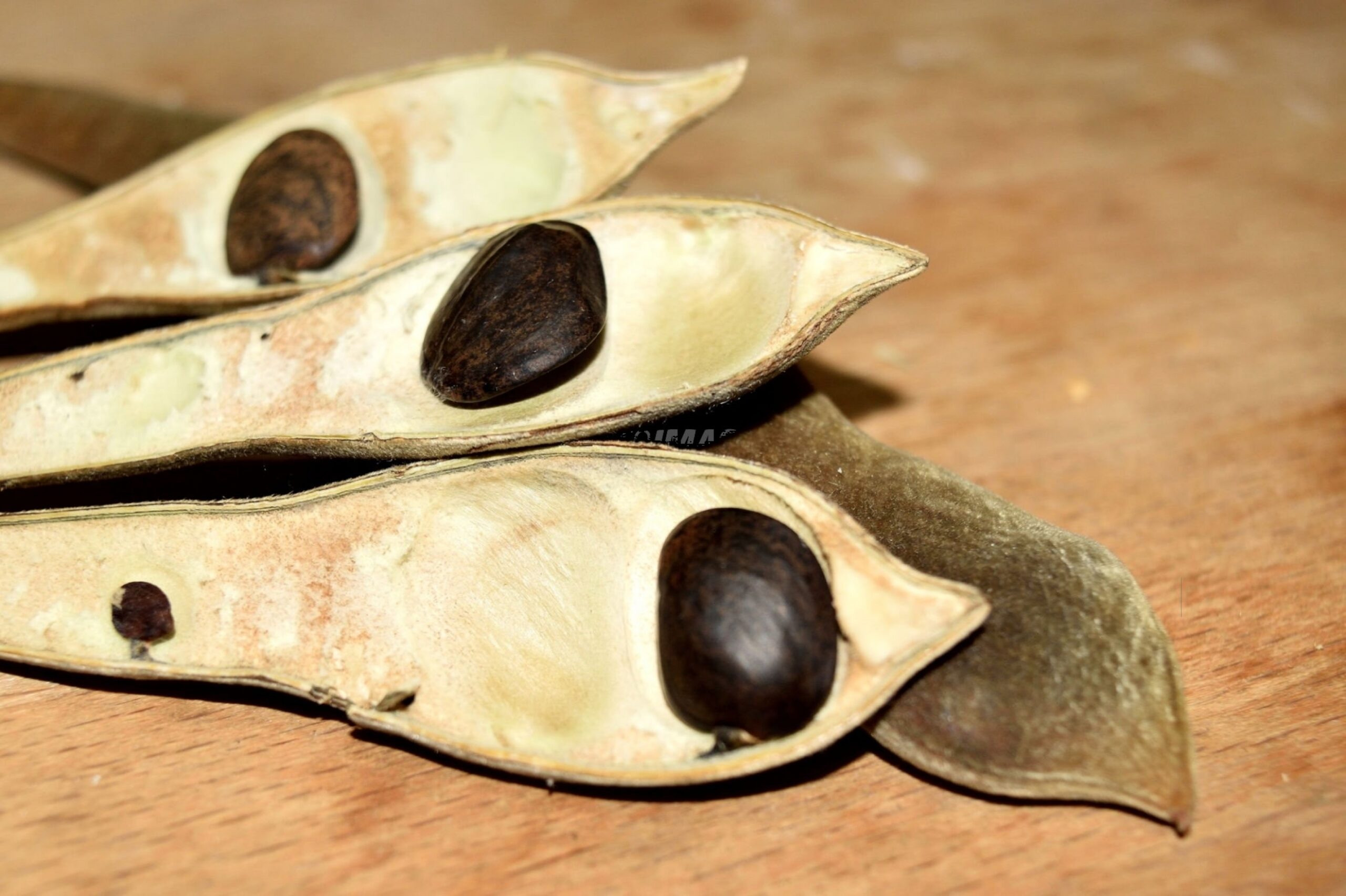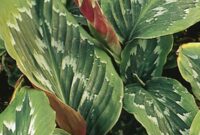I. Choosing the Right Seeds
When it comes to growing Wisteria from seeds, your journey begins with the selection of the seeds themselves. Choosing the right seeds is a critical step that can significantly impact the success of your Wisteria cultivation. In this section, we’ll delve into the significance of selecting high-quality Wisteria seeds, explain how to identify healthy seeds, and highlight the pitfalls of using old or improperly stored seeds.
Significance of Selecting High-Quality Wisteria Seeds
Wisteria vines are known for their enchanting beauty, and starting from the best seeds ensures that you have the potential to cultivate a thriving, vibrant plant. Here’s why choosing high-quality seeds matters:
- Genetic Purity: High-quality seeds are more likely to produce Wisteria plants that faithfully represent their specific variety or species. This means you’ll get the true characteristics, such as flower color and fragrance, associated with the type of Wisteria you desire.
- Vigorous Growth: Healthy seeds typically germinate faster and have better initial growth. This gives your Wisteria seedlings a head start in their journey toward becoming mature, breathtaking vines.
- Disease Resistance: Quality seeds are less likely to carry diseases or pathogens that could harm your plants. Starting with healthy seeds can reduce the risk of diseases affecting your Wisteria down the line.
Identifying Healthy Seeds
Now that you understand the importance of high-quality seeds, let’s discuss how to identify them. When selecting Wisteria seeds, look for these signs of health:
- Uniform Size: Healthy Wisteria seeds are typically uniform in size and shape. Irregularities or deformities may indicate a problem.
- Good Color: Wisteria seeds should have a consistent color, often a shade of brown or gray. Avoid seeds with discoloration, mold, or obvious damage.
- Firm Texture: Healthy seeds feel firm and solid when gently pressed. Soft or mushy seeds are likely compromised.
- No Foul Odor: Healthy Wisteria seeds should not emit any foul or unusual odors. A bad smell can indicate decay.
Pitfalls of Using Old or Improperly Stored Seeds
One of the most common mistakes aspiring Wisteria growers make is using old or poorly stored seeds. Here’s why this can lead to disappointment:
- Reduced Viability: Over time, the viability of Wisteria seeds decreases. Old seeds may have a lower germination rate, which means you’ll have fewer successful seedlings.
- Increased Risk of Disease: Seeds stored in damp or unsuitable conditions are more susceptible to fungal and bacterial infections. These seeds can introduce diseases to your garden.
- Wasted Time and Effort: Planting old or improperly stored seeds can result in weeks or months of waiting, only to discover that they won’t sprout or grow properly. It’s a frustrating setback.
In conclusion, the journey of growing Wisteria from seeds begins with selecting the right seeds. Opting for high-quality seeds, identifying healthy ones, and avoiding old or improperly stored seeds are key steps to ensure your Wisteria project gets off to the best possible start. By paying attention to these details, you’ll increase your chances of cultivating the stunning Wisteria vine you’ve always dreamed of.
II. Proper Germination Techniques
Now that you’ve selected the right Wisteria seeds, it’s time to dive into the crucial process of germination. This step sets the stage for your Wisteria seeds to sprout and develop into healthy seedlings. In this section, we’ll describe the essential steps for germinating Wisteria seeds, emphasize the importance of scarification and stratification, and issue a warning against skipping these crucial germination steps.
Essential Steps for Germinating Wisteria Seeds
Germinating Wisteria seeds may seem daunting, but with the right techniques, you can increase your chances of success. Here are the fundamental steps to follow:
- Soaking: Begin by soaking your Wisteria seeds in warm water for 24 to 48 hours. This helps soften the seed coat, making it easier for the seed to absorb moisture.
- Scarification: After soaking, gently nick or file the seed coat. This process, known as scarification, mimics the natural wear and tear the seed would experience in the wild. It allows water to penetrate the seed, kick-starting germination.
- Stratification: Next, place the scarified seeds in a damp paper towel or in a container filled with moist vermiculite or peat moss. Seal the container or wrap the paper towel in plastic and refrigerate it for about 4 to 6 weeks. This cold stratification mimics winter conditions, breaking dormancy and preparing the seed for growth.
- Sowing: Once the stratification period is complete, carefully plant the seeds in a well-draining potting mix. Plant each seed about 1 inch deep and space them apart to allow room for growth.
- Maintain Moisture and Warmth: Keep the soil consistently moist but not waterlogged. Place the pots in a warm, bright location with indirect sunlight.
- Patience: Germination can take several weeks or even months, so be patient. Once seedlings have multiple leaves and are sturdy enough to handle, they can be transplanted into larger containers or your garden.
The Importance of Scarification and Stratification
Scarification and stratification are two key techniques in the germination process that should not be overlooked. Here’s why they are so essential:
- Scarification: Without scarification, the hard seed coat of Wisteria seeds can be impenetrable, preventing water from entering the seed. Scarification mimics natural processes that allow moisture to reach the embryo, promoting germination.
- Stratification: Wisteria seeds often require a period of cold stratification to break dormancy. Skipping this step may result in delayed or irregular germination, or even failure to germinate at all. Stratification ensures that the seeds are primed for growth when conditions become favorable.
Warning: Skipping Crucial Germination Steps
While it may be tempting to skip some of the germination steps to expedite the process, doing so can lead to disappointment and lower success rates. Skipping scarification and stratification, in particular, can result in poor germination or even seed failure. Remember that Wisteria seeds have evolved to thrive under specific conditions, and replicating these conditions is essential for successful germination.
In conclusion, proper germination techniques are the foundation of growing Wisteria from seeds. By following the essential steps, emphasizing scarification and stratification, and avoiding the temptation to skip crucial phases, you’ll be well on your way to nurturing healthy Wisteria seedlings that will eventually grace your garden with their stunning beauty.
III. Adequate Care and Maintenance
Congratulations! Your Wisteria seeds have successfully germinated, and you now have young seedlings ready to embark on their growth journey. In this section, we’ll delve into the specific care requirements for young Wisteria seedlings, covering essential factors like sunlight, water, and soil conditions. We’ll also discuss the dangers of overwatering or underfeeding, ensuring your Wisteria seedlings thrive.
Specific Care Requirements for Young Wisteria Seedlings
- Sunlight: Wisteria plants are known for their love of sunlight. Ensure that your seedlings receive plenty of bright, indirect sunlight each day. A minimum of 6-8 hours of sunlight is ideal for healthy growth.
- Watering: While young Wisteria seedlings need consistent moisture, they do not tolerate waterlogged soil. Water your seedlings when the top inch of soil feels dry to the touch. Aim for deep, thorough watering rather than frequent shallow watering.
- Soil Conditions: Provide well-draining soil that’s rich in organic matter. Wisteria thrives in slightly acidic to neutral soil with a pH level between 6.0 and 7.0. Ensure good drainage to prevent water stagnation around the roots.
- Container or Garden Space: If you’re growing your Wisteria seedlings in containers, choose a large pot with drainage holes to accommodate the plant’s growth. For garden planting, space seedlings at least 10-15 feet apart, as Wisteria can become a substantial vine.
The Dangers of Overwatering or Underfeeding Seedlings
While proper care is essential, it’s equally crucial to avoid two common pitfalls: overwatering and underfeeding. Let’s explore the risks associated with each:
- Overwatering:
Overwatering can lead to root rot and other fungal issues. Excessive moisture can suffocate the roots, preventing them from taking up essential nutrients. Signs of overwatering include yellowing leaves, wilting, and a foul odor from the soil.
To avoid overwatering, follow a “soak and dry” approach. Water deeply but less frequently, allowing the soil to dry out slightly between waterings. Ensure proper drainage in your pots or garden beds.
- Underfeeding:
Wisteria is a fast-growing plant that requires nutrients to thrive. If the soil lacks essential nutrients, your seedlings may struggle to grow and flower. Signs of underfeeding include stunted growth, pale leaves, and poor overall vigor.
To prevent underfeeding, use a balanced, slow-release fertilizer with a ratio of N-P-K (nitrogen-phosphorus-potassium) of 10-10-10 or similar. Apply fertilizer in early spring and again in late summer to provide the necessary nutrients for robust growth.
In conclusion, adequate care and maintenance are pivotal in nurturing young Wisteria seedlings into healthy, flourishing vines. Remember to provide them with the right amount of sunlight, moisture, and well-draining soil. Additionally, steer clear of overwatering and underfeeding to ensure that your Wisteria plants grow vigorously and ultimately reward you with their magnificent blooms.
IV. Transplanting and Training
Your Wisteria seedlings have been growing steadily, and now it’s time to transition them into your garden or outdoor space. In this section, we’ll detail the process of transplanting Wisteria seedlings into the garden, provide tips on how to train the growing vine for your desired shape and structure, and caution against common mistakes that can impact the success of your Wisteria.
Transplanting Wisteria Seedlings into the Garden
Transplanting is a critical phase in the growth of your Wisteria seedlings. Here’s how to do it effectively:
- Timing: Choose a mild, early spring day for transplanting when the risk of frost has passed, but before the heat of summer arrives. This timing allows the seedlings to establish themselves without extreme temperature stress.
- Site Selection: Wisteria thrives in full sun, so choose a location that receives at least 6-8 hours of sunlight daily. Ensure the soil is well-draining and rich in organic matter. Prepare the planting hole to be about twice as wide as the root ball of the seedling.
- Planting: Gently remove the seedling from its container, being careful not to damage the roots. Place it in the planting hole at the same depth as it was in the container. Backfill with soil, firm it down, and water thoroughly to settle the soil around the roots.
- Support: Install a sturdy trellis or support structure near the newly transplanted Wisteria to provide the vine with something to climb. Secure the seedling to the support gently using garden twine or soft ties.
Training the Growing Vine for Desired Shape and Structure
Wisteria is renowned for its cascading, beautiful blooms, but achieving the desired shape and structure requires some training. Here are tips to guide its growth:
- Pruning: Regular pruning is essential to encourage lateral growth and maintain the desired shape. Prune your Wisteria in late winter or early spring, cutting back excess growth to just a few buds. This encourages more flower-bearing shoots.
- Directional Growth: Train the main stem of the vine upward until it reaches your desired height. Then, guide the lateral branches along the trellis or support structure. This ensures that the Wisteria grows in the direction you desire.
- Thinning: Over time, thin out overcrowded growth to improve air circulation and reduce the risk of disease. Remove weak or dead branches and any growth that doesn’t contribute to the desired shape.
Caution Against Common Mistakes
As you transplant and train your Wisteria, be aware of common mistakes that can hinder its growth:
- Wrong Location: Planting Wisteria in the wrong location, such as a shady spot or near structures where it can become invasive, can lead to poor growth and disappointingly few blooms. Choose your planting site wisely.
- Neglecting Pruning: Failure to prune your Wisteria regularly can result in a tangled mess of growth and fewer flowers. Be diligent in your pruning efforts to maintain shape and promote flowering.
- Inadequate Support: Wisteria can become heavy as it matures. Ensure your support structure is robust and securely anchored to avoid damage or collapse.
In conclusion, transplanting and training your Wisteria seedlings is a pivotal step in the journey to cultivating a stunning, blooming vine. By carefully selecting the transplanting site, providing proper support, and training the vine to achieve your desired shape, you’ll be well on your way to enjoying the captivating beauty of your Wisteria in full bloom. Avoid common mistakes to ensure your efforts are rewarded with a thriving and picturesque garden feature.
V. Troubleshooting Common Issues
Growing Wisteria can be a rewarding experience, but like any plant, it’s not without its challenges. In this section, we’ll address common problems that growers may encounter, such as pests and diseases, and provide solutions along with preventive measures to help you maintain healthy and thriving Wisteria.
Common Pests and Diseases
- Aphids: Aphids are tiny insects that can infest Wisteria, sucking sap from the leaves and causing them to curl and become distorted. To combat aphids, spray the affected areas with a strong stream of water or use insecticidal soap. Encourage natural predators like ladybugs to help control aphid populations.
- Scale Insects: Scale insects are another sap-sucking pest that can harm Wisteria. They appear as small, hard, shell-like bumps on stems and leaves. Use horticultural oil or insecticidal soap to control scale insects. Prune and destroy heavily infested branches if necessary.
- Powdery Mildew: Powdery mildew is a fungal disease that appears as a white, powdery substance on leaves. Ensure proper air circulation around your Wisteria, prune to thin out dense growth, and avoid overhead watering. Fungicidal sprays may be necessary in severe cases.
- Wisteria Borer: The Wisteria borer is a wood-boring insect that can cause significant damage to the plant’s stems. Look for entry holes and frass (insect waste) near the base of the vine. To control borers, prune and remove affected sections, and consider applying an insecticide.
Solutions and Preventive Measures
- Regular Inspection: Regularly inspect your Wisteria for signs of pests and diseases. Early detection allows for prompt action and prevents problems from becoming severe.
- Pruning and Thinning: Pruning your Wisteria not only helps shape the vine but also improves air circulation, reducing the risk of fungal diseases. Remove dead or diseased branches promptly.
- Proper Watering: Avoid overhead watering, which can promote fungal diseases. Water at the base of the plant in the morning to allow foliage to dry during the day.
- Mulching: Apply a layer of mulch around the base of your Wisteria to help conserve moisture, regulate soil temperature, and reduce weed competition. Mulch also acts as a barrier against soil-borne diseases.
- Integrated Pest Management (IPM): Implement an IPM approach that combines various pest control methods, including biological control (using natural predators), cultural practices (pruning, maintaining plant health), and, if necessary, chemical control (insecticides or fungicides).
- Choose Disease-Resistant Varieties: If available, select Wisteria varieties that are known for their resistance to common pests and diseases.
By addressing these common issues with diligence and applying preventive measures, you can help keep your Wisteria healthy and thriving. Remember that a proactive approach to pest and disease management is often the key to a flourishing and stunning Wisteria display in your garden.



